This is a very common native perennial. I like to see its fresh green rosettes of leaves in early spring. Later on, it develops elegant flowering stems about 60 cm tall bearing yellow 5-petalled flowers which wave around in the breeze and catch the eyes of flying insects.
It belongs to the Rosaceae, the family of roses, strawberries and apples, one of the most economically important groups. You can find a description of the characters of the rose family on the LEARN part this site or just click https://www.youtube.com/watch?v=PdXzXljkPZ4.
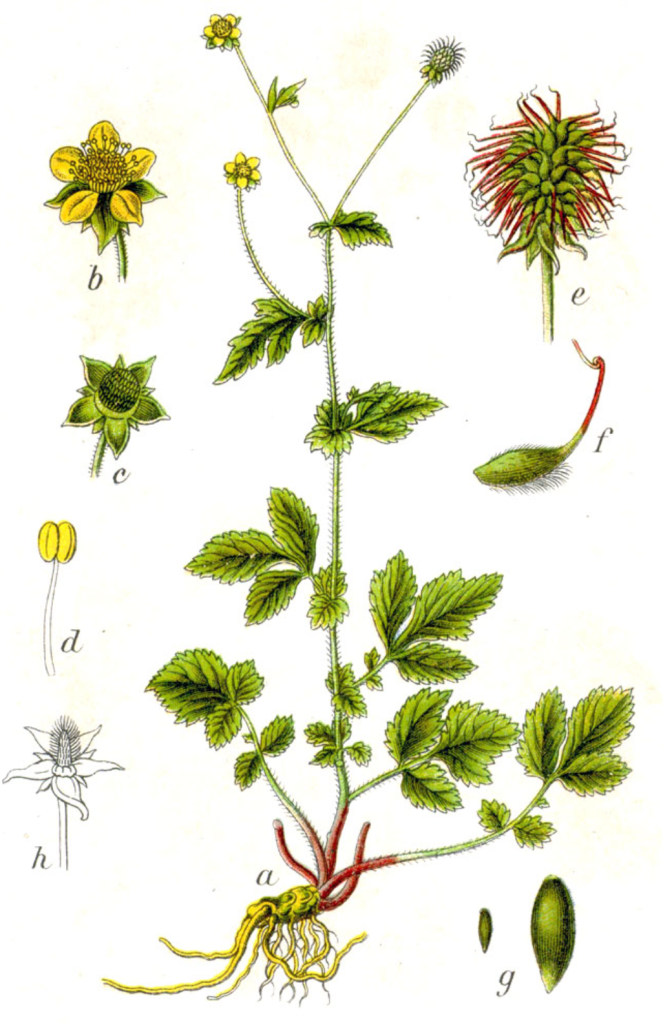
It is a common plant in most parts of the British Isles, missing only from the extreme north of Scotland and the Highlands. It is found as a native almost everywhere in Europe and in parts of Asia. It can be found as a ‘pommy weed’ in Australia and it crops up in New Zealand. Also in parts of North America: generally it seems to track migration of European folk.
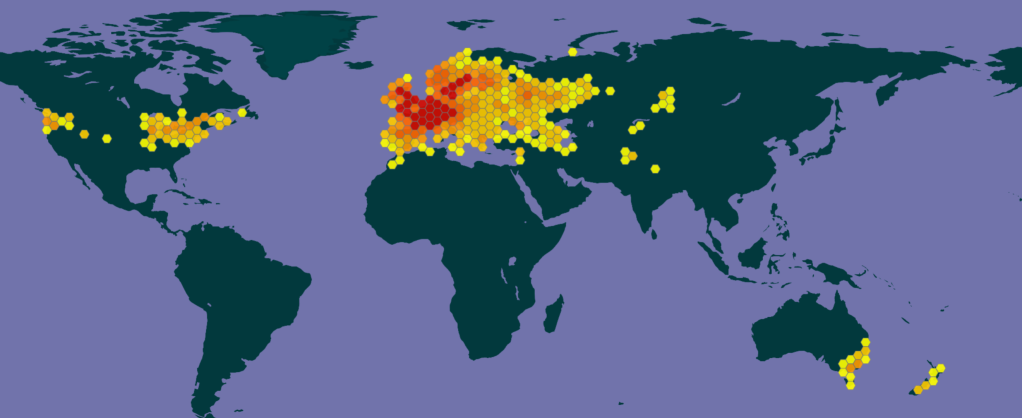
As with most members of the family, Geum has five separate petals, the epicalyx and the stipules. It looks like a strawberry flower but it’s yellow not white. Unlike strawberry this flower doesn’t develop into a fleshy tasty fruit: instead it makes hooked achenes that cling to fur or clothing to disperse the seed.
Its vernacular name Wood Avens interests me. Stace (2019) says it grows in ‘woods and hedgerows’ , Hill et al. (2008) have its habitat as merely ‘woodland’ whilst Clapham et al. (1981) are more expansive and say ‘woods, scrub hedge banks and shady places on good damp soils’. So, if it is indeed a woodland plant why did Linnaeus call it Geum urbanum (‘of the city’) rather than Geum sylvaticum (‘of the woodland’)? Well, the likely short answer is that Linnaeus was more observant than others and noticed it was a very common plant in the streets and parks of his town, Uppsala, in Sweden. Why have authors of floras omitted to tell their loyal readers that this is an urban plant? They seem to be in denial of the fact that plants grow in our human living spaces. By way of contrast, in the USA where the plant has been introduced, they call it ‘Town Avens’ a name which lacks poetry but is in line with Linnaeus.
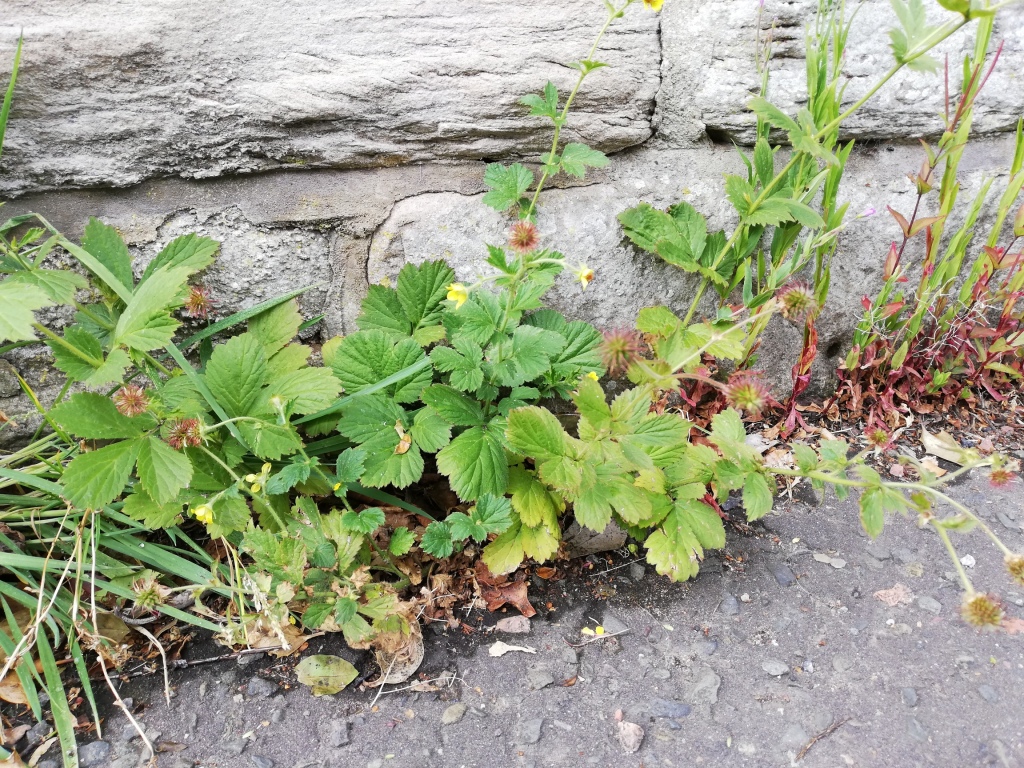
Of course, it grows in woodlands as well as being an urban plant of open habitats. I’ve just been looking at Keith Kirby’s excellent new book Woodland Flowers. He describes a case at Monks Wood in Cambridgeshire. A four-hectare field has been left to colonise naturally since the 1960s. There are 89 ground flora species but some are mostly only at the edges. One of those is Wood Avens. Evidently, it is a plant of edges.
Taylor (2007) wrote a longish piece about this plant for the British Ecological Society’s series Biological Flora. He gets closer: “Geum urbanum is essentially confined to deciduous woodlands, scrub and hedgerows on well-drained soils, although it is sometimes found in more open disturbed habitats and as a garden weed”. Ballinger (2021) gets it right “one of the commonest urban flowers, on pavements, in gardens etc.” Most gardeners will know it as a weed but it isn’t pernicious, just one hard tug and it’s uprooted.
I find it by pavements and in the little patches of ground around planted street-trees, parking meters and other street furniture, also in parkland and cemeteries, and on the tops of walls. These habitats have little in common with the woodland environment, and it is quite hard to explain why a woodland plant would thrive there. Woodlands are shady and the air is humid, whereas pavements are bright and dry. Leuschner (2002) grew this species and seven other woodland plants at different humidities. All but one had a markedly reduced growth rate at low humidity. However, Geum urbanum was not the one exception, its growth was reduced more than most when grown in relatively dry air.
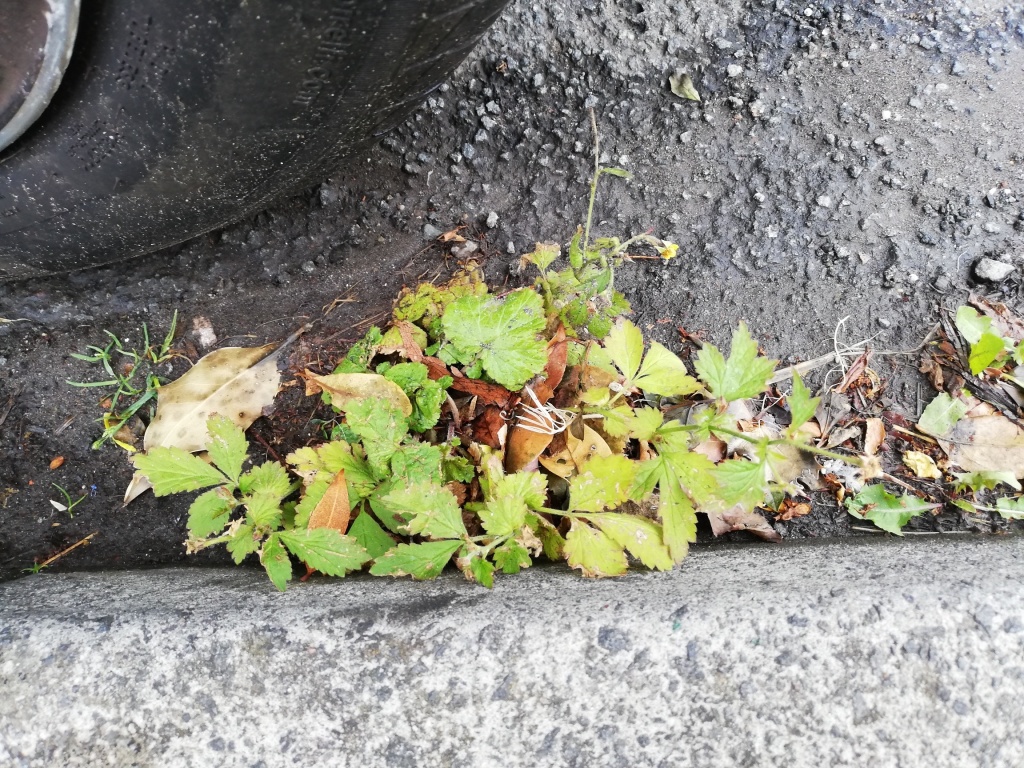
I find the species especially common in the street where I live, a Victorian terrace in Edinburgh. On a walk last night I counted 12 diminutive plants in 200 metres, one of them flowering despite efforts by some of my neighbours to rid their parking spots of weeds. It’s seemingly a most inhospitable environment, where the pavement joins the road and detritus accumulates. The high frequency in this habitat may be explained by the dispersal mechanism. The achenes have little barbs for animal dispersal. Small woodland creatures might carry seeds far. In the urban environment these days we have a large canine population. Dog-walking has become a popular pastime, and a number of active dog-walking companies now exist for those owners who have become unwilling or unable to exercise their dog. They walk their dogs in local woodlands and parkland and return along streets, every day. The side of the pavement and lamp-posts are dog-latrines: the detritus is nutrient-rich, plants grow there and it becomes a source of seed as well as a recipient of seeds from woodland. In former times, authors would point to trouser turn-ups as the agent of dispersal but turn-ups barely exist anymore and I think that dog is the main agent in townscapes. Cat as well, possibly.
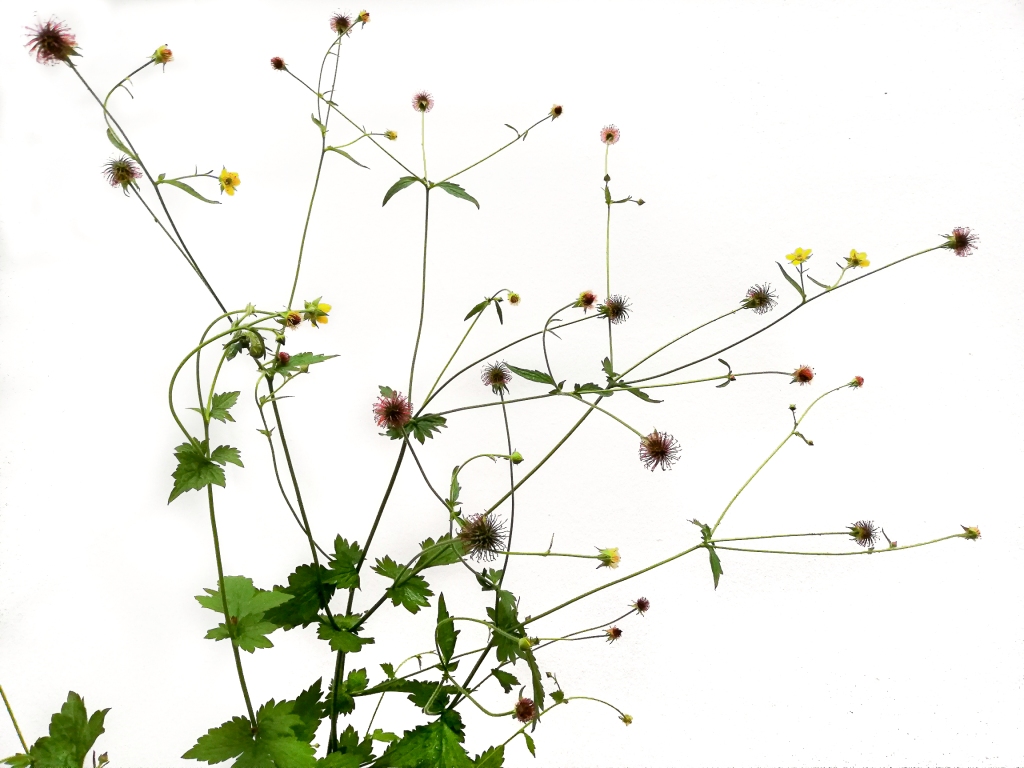
Geum urbanum hybridises with a closely related water-loving species called Water Avens, Geum rivale and the hybrid look intermediate between the two parents. They have the same number of chromosomes (2n = 42) but there are clear differences in appearance. Water Avens has longer, pinkish, petals and the flower head is directed to the ground (‘pendant’) rather than to the sky above (‘erect’ in G. urbanum).The offspring are collectively called ‘a hybrid swarm’ and vary in a continuous manner between the two parental species. Richard Abbott has discussed this topic in more detail here: https://botsocscot.wordpress.com/2020/05/26/hybrid-swarms-of-geum/
The status of hybrids, and the issue of whether they breed true in the wild, exercised the mind of none other than Gregor Mendel (see Stansfield 2007), and is at the heart of the entire question ‘what is a species’? In this case, the hybrid has been known for a long time and formerly it was treated as a species in its own right, G. intermedium (Balfour 1863). Now it is referred to as G. x intermedium.
The mating system of this pair of species was reported by Ruhsam et al. (2013). They looked at a population by the Water of Leith, a small river flowing through Edinburgh. It turns out that G. urbanum is often self-fertilised whilst G. rivale is outcrossing. Hybrids are most often formed when pollen is transferred from the outcrossing member to the normally self-fertilized member. But the F1 hybrids can go on to act as parents too, and so the whole picture is quite complex. However, offspring from all possible crosses survived and grew well.
Another name for G. urbanum is Herb Bennet, reflecting its former widespread use by herbalists. Culpeper (1653) lists many ailments that it is supposed to cure. He says it ‘comforts the heart, and strengthens the stomach and a cold brain’. Re-assuringly at the end of his article he says ‘It is very safe: you need have no dose prescribed; and it is very fit to be kept in every body’s house’. In modern times most pharmaceutics are produced synthetically, but recently there is renewed interest in the medicinal use of plants: Garcia-Oliveira (2020) reported on the occurrence of biological active chemicals in the Rosaceae, and they find that G. urbanum has many that are potentially valuable to the pharmaceutical industry. The roots in particular contain a wide range of compounds. Tentatively, I chewed some roots. They taste like cinnamon and cloves, fibrous but not bitter, in fact rather pleasant. Spurred on by this experience, I turned to Plants for a Future. Its web site says this.
“Wood avens is an astringent herb, used principally to treat problems affecting the mouth, throat and gastro-intestinal tract. It tightens up soft gums, heals mouth ulcers, makes a good gargle for infections of the pharynx and larynx, and reduces irritation of the stomach and gut. All parts of the plant, but especially the root, are anti-inflammatory, antiseptic, aromatic, astringent, diaphoretic, febrifuge, stomachic, styptic and tonic. An infusion is taken internally in the treatment of diarrhoea, intestinal disorders, stomach upsets, irritable bowel syndrome and liver disorders, it is also applied externally as a wash to haemorrhoids, vaginal discharges etc. and to treat various skin afflictions – it is said to remove spots, freckles and eruptions from the face. The root is best harvested in the spring, since at this time it is most fragrant. Much of the fragrance can be lost on drying, so the root should be dried with great care then stored in a cool dry place in an airtight container, being sliced and powdered only when required for use. The powdered root had a great reputation as a substitute for quinine in the treatment of intermittent fevers”
You can buy dried ‘Wood Avens Rhizome’ online from Amazon.com. Please don’t take this as a recommendation. I am not a qualified physician and when I am ill (rarely) I go to my doctor rather than chew wild roots!
John Grace
References
Abbot R (2020) Hybrid Swarms of Geum. This blog site. Click on: id-swf-geum/
Ballinger B (2021) Checklist of the Urban Flora of Scotland. Botanical Society of Scotland.
Balfour DH (1863) Flora of Edinburgh—being a list of plants found in the vicinity of Edinburgh. Adam & Charles Black, Edinburgh.
Clapham AR, Tutin and Warburg (1981) Excursion Flora of the British Isles. Cambridge.
Culpeper (1653) Complete Herbal (I used the 1995 version in Wordsworth Classics)
Garcia-Oliveira P (2020) Scientific basis for the industrialization of traditionally used plants of the Rosaceae family. Food Chemistry 330, Article 127197, DOI: 10.1016/j.foodchem.2020.127197
Hill MO, Preston CD and Roy DB (2004) PLANTATT – attributes of British and Irish plants: status, size, life history, geography and habitats. CEH, Monks Wood.
Kirby K (2021) Woodland Flowers. Bloomsbury, London.
Leuschner C (2002) Air humidity as an ecological factor for woodland herbs: leaf water
status, nutrient uptake, leaf anatomy and productivity of eight species when grown at
low or high vpd. Flora 197, 262-274.
Ruhsam M, Hollingsworth P and Ennos RA (2013) Patterns of mating, generation of diversity, and fitness of offspring in a Geum hybrid swarm. Evolution. 67, 2728-2740. https://doi.org/10.1111/evo.12147
Stace C (2019) New Flora of the British Isles, 4th Edition. Stace.
Stansfield WD (2009) Mendel’s search for true-breeding hybrids. Journal of Heredity, 100, 2-6. Mendel’s Search for True-Breeding Hybrids | Journal of Heredity | Oxford Academic (oup.com)
Taylor K (1997) Geum urbanum L. Journal of Ecology 85, 705-720
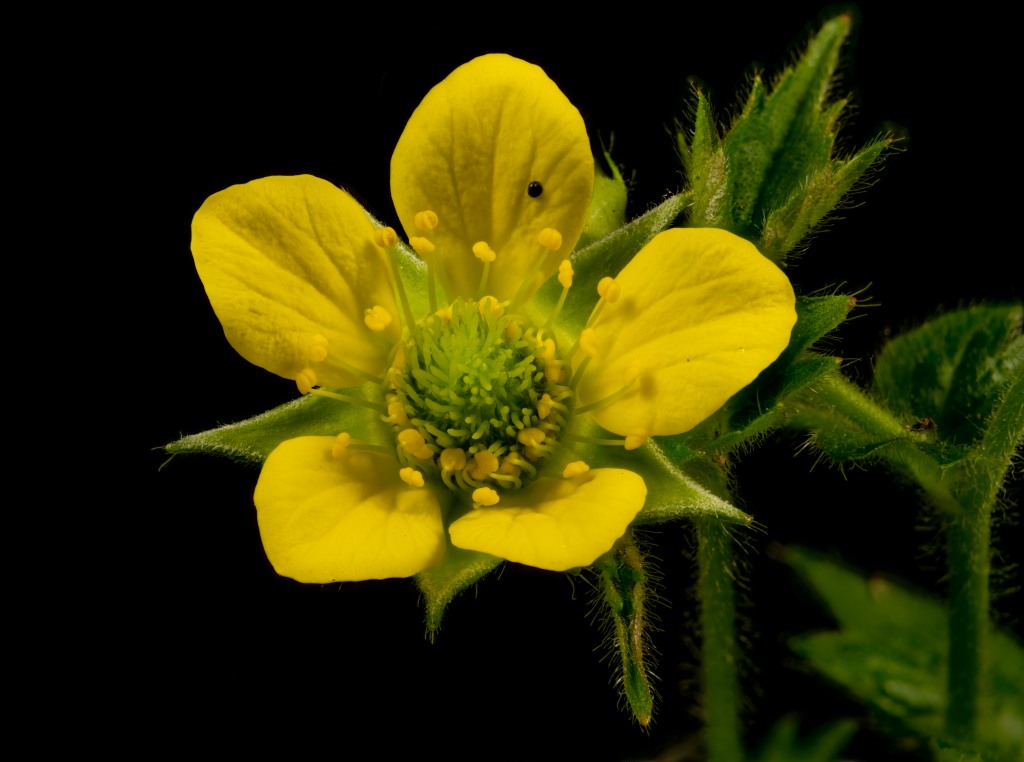
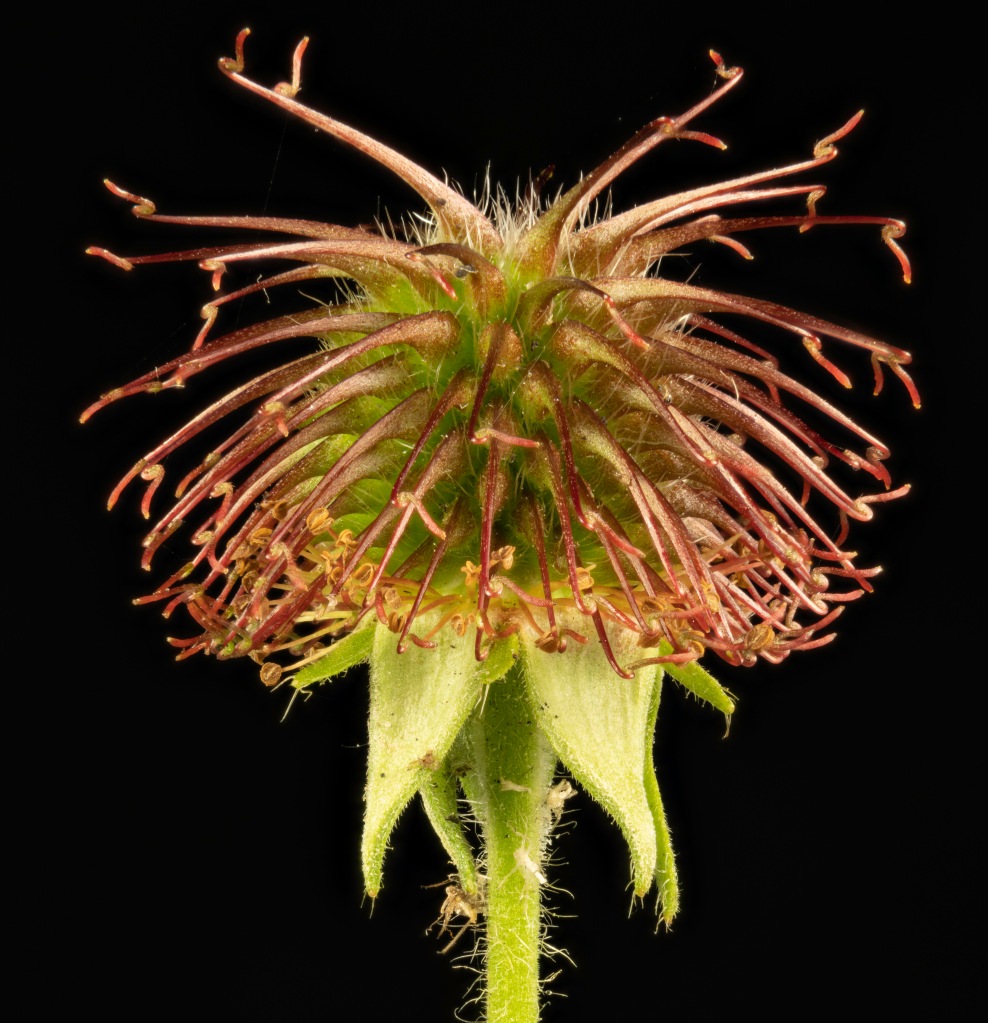
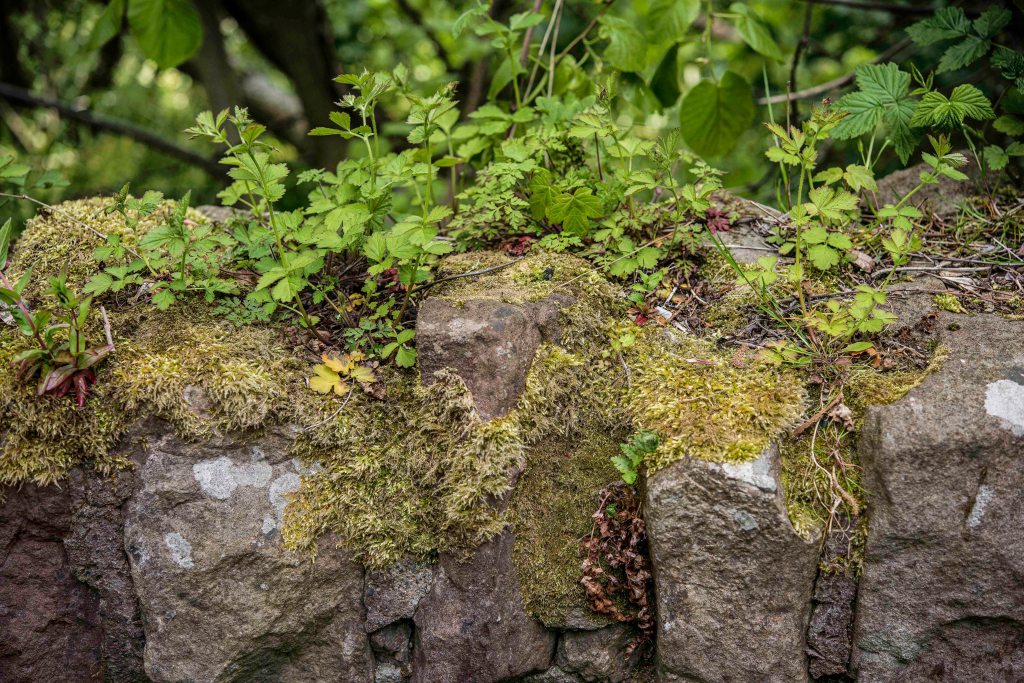
What a fabulous article. I like seeing this plant on a walk. My dog has digestive issues and regularly forages for it.
LikeLike